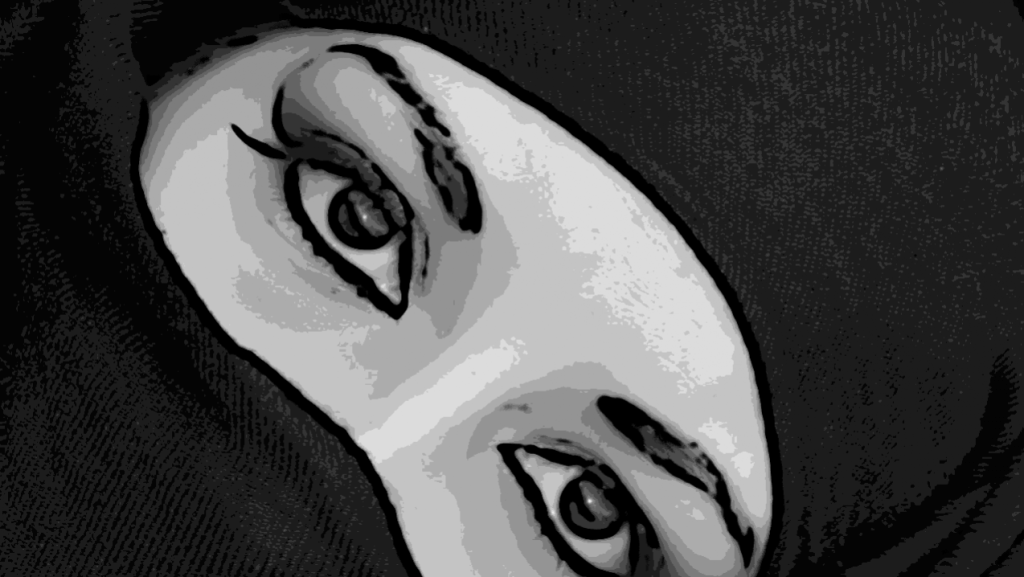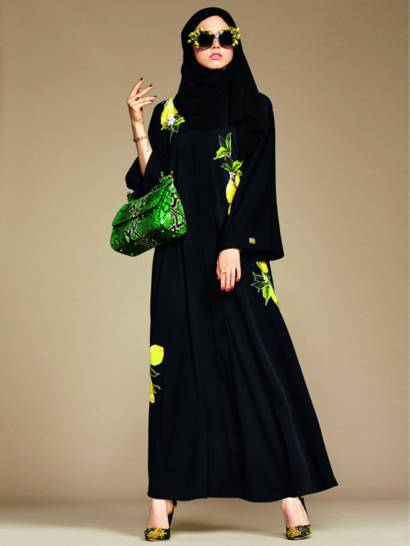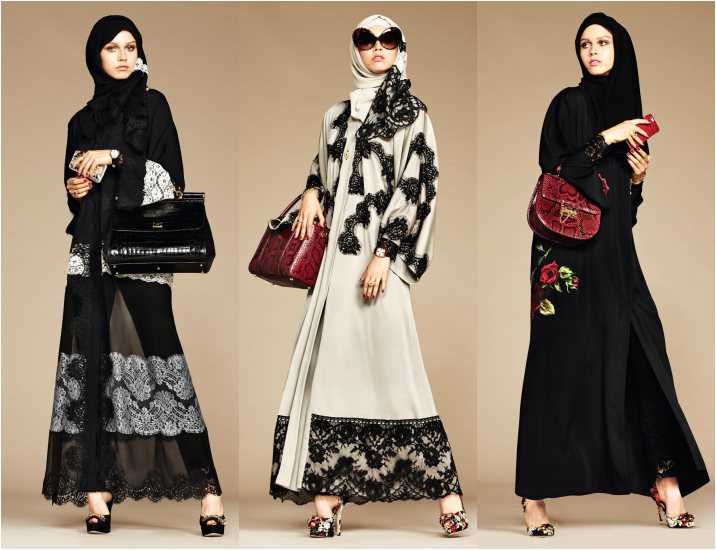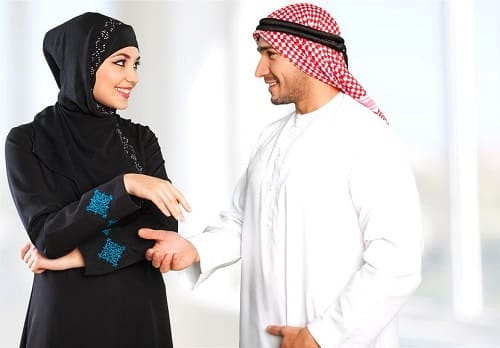The Arab woman is the identifying symbol of the culture of the Middle East


Hemos crecido con la lógica de que todo aquello que sea diferente o contrario a nosotros es opresión, retraso cultural, sumisión y no es civilización. Y crecimos criticando a la cultura oriental que anestesia cualquier expresión de placer sexual, de libertad femenina, de mutilación de pensamiento y del irrespeto a la mujer árabe.
We have grown up with the logic that everything that is different or contrary to us is oppression, cultural backwardness, submission and is not civilization. And we grew up criticizing the oriental culture that anesthetizes any expression of sexual pleasure, feminine freedom, mutilation of thought and disrespect for Arab women.

Sincera y precisamente es la mujer oriental quien realmente lleva el símbolo, el valor y el respeto identificativo de la cultura árabe, especialmente la que profesa la religión musulmana. Se le juzga a quien usa un velo o un hiyab o chador, y a los hombres porque llevan vaqueros como los occidentales no se les juzga. Crecimos en la lógica de discriminar a la mujer árabe y elevar al hombre árabe al nivel de respeto y admiración, y como al hombre dominante.
Sincerely and precisely it is the oriental woman who really carries the symbol, the value and the identifying respect of the Arab culture, especially the one that professes the Muslim religion. Those who wear a veil or hijab or chador are judged, and men because they wear jeans like Westerners are not judged. We grew up in the logic of discriminating against Arab women and elevating the Arab man to the level of respect and admiration, and as the dominant man.

Que las musulmanas se tapen las partes que llaman la atención de hombres y escondan partes de sus cuerpos por motivos culturales o religiosos, ¿te parece sexista? Sí, ciertamente. Pero acaso las que no son musulmanas y sí andan exhibiendo todas las partes que llaman la atención de un hombre, reducen todo su encanto, su valor femenino y todo su ritual de belleza a la apariencia ¿no es sexista?
That Muslim women cover the parts that attract the attention of men and hide parts of their bodies for cultural or religious reasons, does it seem sexist to you? Yes, certainly. But perhaps those who are not Muslim and do go around exhibiting all the parts that attract the attention of a man, reduce all their charm, their feminine value and all their beauty ritual to appearance, isn’t that sexist?
Algunas se visten con hiyab por respeto a la religión, otras para protegerse de las miradas de los hombres que no son miembros de la familia, otras lo usan después de casarse para respetar aún más la nueva vida, su dedicación y consagración al hombre.
Some are dressed with hijab for respect to religion, others to protect themselves from the eyes of men who are not members of the family, others wear it after marriage to further respect the new life, their dedication and consecration to man.
El velo o hiyab es símbolo de libertad para algunas, seguridad para otras, obligatorio y/o elección para muchas. Es una lástima valorar o juzgar a una mujer por llevar un velo, cuando en realidad el verdadero Islam (también debería serlo cualquier otra religión) pone a la mujer en primer lugar, es la que da la vida y por eso es la base de la familia, es decir de la sociedad y por lo tanto merece ser respetada en todos los ámbitos y niveles sutil y educadamente. La religión musulmana jamás ha oprimido a las mujeres en el peor de los sentidos, son tradiciones que las sociedades imponen y siguen sus propias leyes y sencillamente se acatan, pero muchas de esas leyes han cambiado. Entonces ¿porque el resto de las mujeres que no usan el hiyab deben criticar en vez de desarrollarse y también cambiar algunas leyes como lo están siendo las mujeres con velo? No significa que taparse te lleva directo al cielo o que seas mejor mujer, pero da seguridad, respeto y confianza.
The veil or hijab is a symbol of freedom for some, security for others, obligatory and / or choice for many. It is a shame to value or judge a woman for wearing a veil, when in reality true Islam (any other religion should also be) puts the woman first, she is the one who gives life and that is why she is the basis of the family, that is to say of society and therefore deserves to be respected in all spheres and levels subtly and politely. The Muslim religion has never oppressed women in the worst sense, they are traditions that societies impose and follow their own laws and are simply obeyed, but many of those laws have changed. So why should the rest of the women who do not wear the hijab criticize instead of developing themselves and also change some laws such as veiled women did? It does not mean that covering up takes you straight to heaven or that you are a better woman, but it gives security, respect and confidence.
No es válido seguir atacando a las mujeres que usen velo en este nuevo amanecer mundial. Muchos países árabes siguen con su discurso sobre el velo ciertamente pero han ampliado la concepción y han avanzado en cuanto a derechos femeninos, en cuanto a la visión que tenemos los occidentales con respecto a ellas.
It is not valid to continue attacking women who wear veils in this new world dawn. Many Arab countries continue with their discourse on the veil certainly but they have broadened the conception and have advanced in terms of women’s rights, in terms of the vision that Westerners have regarding them.

Los derechos no se llevan en el velo, se llevan en la libertad de expresión y en la paridad de las aspiraciones de las mujeres, y en que cada vez que existan cambios no sean las mujeres quienes paguen, sino que destaquen y avancen frente a los ojos de todos.
Rights are not worn in the veil, they are carried in the freedom of expression and in the parity of the aspirations of women, and in every time there are changes and is not women who pay, but rather stand out and advance in front of the everyone’s eyes.

Las mujeres tunecinas coinciden en que su país es el más desarrollado del mundo árabe y tienen el derecho a aspirar a la presidencia de la República, pueden casarse con hombres de otra confesión religiosa, la opción del matrimonio entre violador y víctima ha sido anulada. Ahora ya podemos llamar las cosas por su nombre antes de discriminar, juzgar o criticar.
Tunisian women agree that their country is the most developed in the Arab world and they have the right to aspire to the presidency of the Republic, they can marry men of another religious confession, the option of marriage between rapist and victim has been annulled. Now we can call things by their name before discriminating, judging or criticizing.
Irán fue uno de los primeros países en el Medio Oriente que permitió que las mujeres estudiaran en la universidad y desde la Revolución Islámica en 1979 ha alentado a las mujeres a matricularse en la educación superior. Pueden conducir coches, montar negocios y vivir una vida casi normal: es verdad que el velo es obligatorio pero la mayoría desafía la norma y muestra parte de su cabello. Pero no está mal visto.
Iran was one of the first countries in the Middle East to allow women to study at university and since the Islamic Revolution in 1979 it has encouraged women to register in higher education. They can drive cars, do businesses and live almost normal lives: it is true that the veil is mandatory but most defy the norm and show part of their hair. But it is not badly seen.
Irak un país tradicionalmente patriarcal, las mujeres ya han tomado un rol de liderazgo y su protagonismo ya está siendo celebrado por todo lo alto y son ellas mismas las que están moldeando su propio futuro. Después de la invasión a Irak, tanto los hombres como las mujeres han trabajado conjuntamente para marcar un logro social digno.
Iraq a traditionally patriarchal country, women have already taken a leadership role and their leadership is already being celebrated in style and it is themselves who are shaping their own future. After the invasion of Iraq, both men and women have worked together to mark a worthy social achievement.
Asimismo en tiempos de la dictadura de Saddam Hussein, Irak era uno de los países más igualitarios de Oriente Próximo: las mujeres podían ir a la universidad, ocupar puestos de alta responsabilidad y viajar solas al extranjero.
Also during the dictatorship of Saddam Hussein, Iraq was one of the most egalitarian countries in the Middle East: women could go to university, hold positions of high responsibility and travel abroad alone.

La pluralidad de culturas, la mentalidad globalizada, las protestas y las revoluciones dan un paso hacia adelante en la defensa de los derechos humanos de las mujeres en estas sociedades. Ellas pueden ser aliadas del cambio y la exaltación de la personalidad de un país y convertirse en el símbolo de la identidad de la mujer árabe. Así lentamente se reconstruye el Oriente Próximo con una nueva visión y un nuevo renacimiento en donde todas seremos iguales, respetadas y valoradas estemos o no estemos tapadas.
The plurality of cultures, the globalized mentality, protests and revolutions take a step forward in the defense of the human rights of women in these societies. They can be allies of change and the exaltation of the personality of a country and become the symbol of the identity of Arab women. In this way, the Middle East is slowly being rebuilt with a new vision and a new rebirth where we will all be equal, respected and valued, whether we are covered or not.
La mujer de Oriente Próximo de hoy en día dejó de ser débil, ha revolucionado la idea de sumisión y empezó a creer en la protección de sí misma frente a la sociedad machista dentro y fuera de los países árabes. No depende del velo ser sumisa o libre, depende de cuanto se ama a sí misma, se respeta y se valora.
Today’s Middle Eastern woman is no longer weak, she has revolutionized the idea of submission and has begun to believe in protecting herself from the macho society inside and outside the Arab countries. It does not depend on the veil to be submissive or free, it depends on how much she loves herself, respects herself and values herself.
Las mujeres con velo en su mayoría ya no le temen sino que se han convertido en el significado del velo en sí, en el símbolo de protección, seguridad, paz, elegancia y amor. No se han hundido en el concepto primitivo del velo de inferioridad, sino que han aprovechado su fortaleza para subir de categoría frente al mundo entero.
Most veiled women no longer fear the veil but have become the meaning of the veil itself, the symbol of protection, security, peace, elegance and love. They have not sunk into the primitive concept of the veil of inferiority, but have used its strength to rise in rank in front of the entire world.

Mujer serás guapa todo lo que quieras, estés no estés tapada, estés o no estés ante una sociedad ciega e irrespetuosa. Escucha al otro hablar de ti pero no creas en sus palabras, solo abandona la pista y sigue adelante.
Woman you will be beautiful all you want, you are or not covered, you are or you are not in front of a blind and disrespectful society. Listen to the others talking about you but don’t believe their words, just get off the track and move on.
Descubre más desde LA AGENCIA MUNDIAL DE PRENSA
Suscríbete y recibe las últimas entradas en tu correo electrónico.



Cada cultura es diferente y se debe tratar con respeto y profunda admiracion…Además el velo es intrigante aunque tienen un símbolo de lealtad hacia su pareja…Me encantó
Me gustaMe gusta
Tienes razón, si no existieran tantas culturas y diversas tradiciones, el mundo sería aburrido siendo todos iguales. La pluralidad tiene un sabor a alegría a respeto a tolerancia..
Me gustaMe gusta